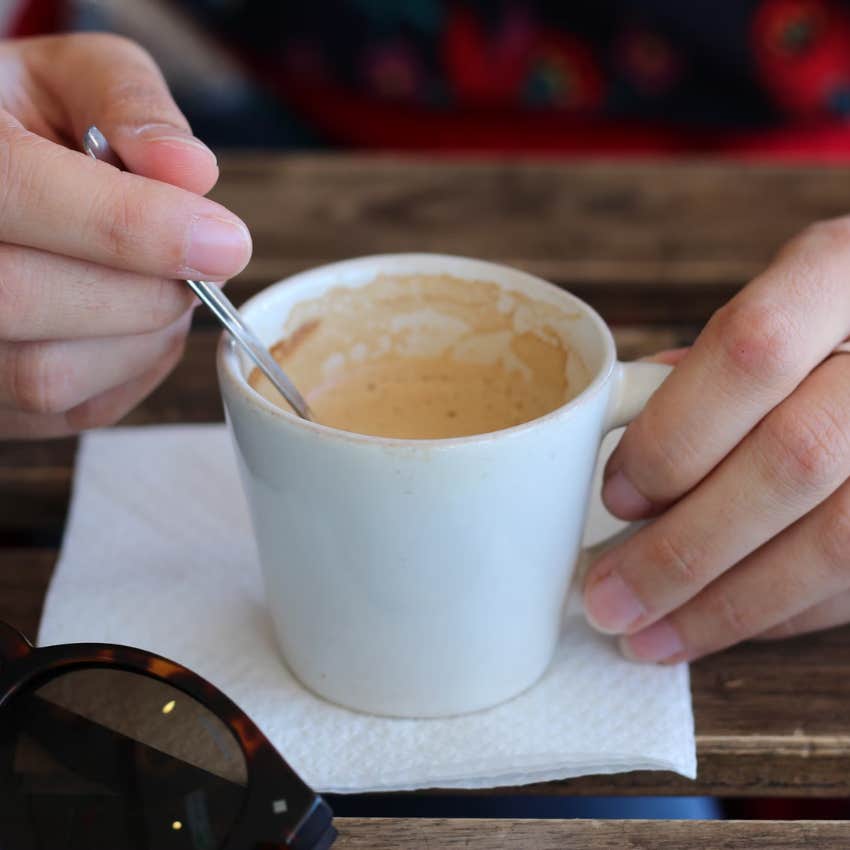The Strange Hobby That Helps Me Regulate My Neurodiversity
Hobbies can be expensive but this one pays priceless dividends.
 RossHelen | Canva
RossHelen | Canva Since childhood, I have enjoyed everything about coffee. As a little girl, I would be given a china tea cup filled with warmed milk, sugar, and a splash of coffee to enjoy with my grandmother each afternoon. By the time I hit high school, I drank black coffee daily.
Drinking coffee was sometimes about the caffeine kick, but mainly the rich aroma carried the nostalgic tradition my grandmother brought with her when she immigrated to the US from Croatia. Coffee was a time to connect and rest in the middle of the afternoon.
As an adult, I started taking my coffee more seriously. Being from Washington, I benefited from the swell of the Starbucks wave. I enjoyed beans from different continents and cycled through various brewing methods, from drip to French press and espresso.
Once I got into espresso, there was no turning back. Unfortunately, playing the espresso game can be exceedingly expensive, and there is always an upgrade to long for. Whether it’s a better grinder, a fancy new machine, or the expensive gadgets that promise to enhance your process, the endless possibilities have a way of draining the wallet faster than you can pull a double shot.
When I was diagnosed with ADHD as an adult, espresso became more than a fun and tasty hobby.
It morphed into a way to regulate my brain and set the course for my day.
Pulling luscious shots of creamy, crema-topped espresso is both science and art, much like cooking. When you get all the variables right, they synergistically produce a potent elixir that I usually enjoy with a splash of hot water.
There was a time when I medicated my ADHD to function at my job, which demanded strategic problem-solving and linear conversations. But now that I’m retired, I use different coping techniques to manage my neurodiversity.
As I’m preparing my first espresso of the day, I’m forced to concentrate and sequence my actions, which helps focus the chaos raging in my brain.

Photo: daniela_curly/Unsplash
RELATED: 6 Small-But-Often-Overlooked Symptoms Of ADHD In Adults
I measure twenty-two grams of freshly roasted beans into the grinder and then polish the ground coffee with a handy spinning gadget. After that, I use a precise tamping tool to pack the coffee.
When I’m ready to pull a double shot, I check the water temperature gauge (my preferred temp is 200 degrees), twist the portafilter into the group head, place my shot glass on a small scale under the portafilter, and press the manual button.
The perfect shot requires the correct time and yield. I prefer a 30-second shot time with a 44-gram yield of espresso. Because I have to pay close attention to my process, it helps calm the noise in my brain and brings focus.
Once I have my shots, I pour them into a small pre-heated mug and add a splash of water. Then, I take the time to savor my Americano while planning my morning. Later in the afternoon, I repeat the process to help me have a peaceful but productive rest of my day.
RELATED: Hacking My ADHD
Living with ADHD, especially while no longer taking medication, is challenging for me but also for my partner.
I’m grateful that she is filled with patience and grace. And on days I’m struggling, she will likely show up with an iced Americano from my favorite local espresso shop. I’m inclined to think that drink helps her as much as it does me.
ADHD affects my impulse control, my ability to focus when things aren’t optimal around me (a messy writing desk is the bane of my creativity), and my ability to remember things I need to do.
Being still or meditating is nearly out of the question, and getting lost in an endless binge-watch of old CSI Miami or Grey’s Anatomy shows is a genuine temptation because sometimes that is the only way to get my brain to relax.
My neurodiversity creates situations where I love the thrill of starting new things and get bored with the necessary maintenance to keep that new thing going. It affects my reading ability, especially with long stories, which I find increasingly frustrating as I grow older.
But making and drinking espresso helps me get my brain onto a semi-linear track, and I’m grateful for that. It doesn’t resolve all the challenges, but it gives me a positive start to my morning and a needed reset for my afternoon.
I had no idea how important my hobby would become or how it would positively impact my neurodiversity. I’m eternally grateful that something so delicious can also be so helpful. And I’m so grateful my grandmother instilled in me a love and appreciation for coffee.

Photo: Karolina Grabowska/Pexels
RELATED: How People With ADHD Can Drop The Shame & Build Genuine Self-Worth
Kim Kelly Stamp is a writer, essayist, and editor for Parasol Pubs. Her work has appeared on Insider, Huffington Post, New York Times, NBC News, StyleCaster, Metro UK, Shondaland Digital, and Medium, among other outlets, where she writes about authenticity, retirement, relationships, and lifestyle topics.
